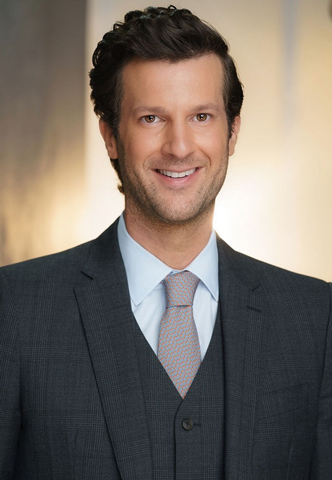Many motorcyclists love customizing their bikes as much as they love riding them. But certain popular modifications aren’t just illegal—they also increase your risk of getting seriously injured in a motorcycle accident. You’re better off leaving these modifications in the garage.
1. Aftermarket Emissions Devices
In 2016, Harley-Davidson was struggling to get their motorcycles to meet emissions standards. To get around regulations, the company sold 340,000 after-market tuning devices allowing customers to replace the exhaust on their bikes with a freer-flowing intake. The bikes rode better but came with a heavy increase in emissions. In the end, Harley-Davidson was cited and came to a settlement with the EPA. The motorcycle company agreed to stop selling the illegal mods, buy back and destroy any illegal tuners on the market, and pay a $12 million fine.
California takes its emissions laws seriously. The state Vehicle Code makes it illegal to alter any parts or accessories related to emissions on street and off-road motorcycles. Some motorcyclists might label their bike as a competition or track-only vehicle to get around these state and federal emissions regulations. But this will not fly if your motorcycle isn’t built for performance or has thousands of road miles on the odometer.
California’s Motorcycle Anti-Tampering Act requires all motorcycle models dated 2013 or later to display an EPA approval sticker on their exhaust systems. If you’ve got an aftermarket exhaust system, you must petition the California Air Resources Board (CARB) for approval. Failing to have this sticker will result in you failing your Smog Check inspection.
No matter what your opinions are on California’s emissions laws, modifying your bike beyond the legal limits can lead to fines or even get your motorcycle impounded.
2. Handlebar Modifications
Customized handlebars are a relatively easy way to give your motorcycle a distinguishing feature. High handlebars otherwise known as “ape hangers” are popular, especially on choppers. But California has limits on how high your handlebars can go.
Under California law, your hands must not be higher than 4 inches over your shoulders when resting on the handlebar grips. California considers handlebars higher than the legal limit a hazard, as handlebars can block your view, potentially jeopardizing your motorcycle’s safety.
3. Aftermarket Indicators
California law requires that all motor vehicles have at least 2 turn signal lamps each on both the front and back. Motorcycles manufactured before 1973 must have their turn signals at least 9 inches apart, while any models created in 1973 or after must be 16 inches apart.
Aftermarket turn signal indicators may be installed improperly on your motorcycle. They may be obscured by other parts of your bike or difficult to see from a distance. Failing to have the proper turn signal indicators can not only endanger your life but can also get you pulled over.
4. Motorcycle Chassis LEDs
There’s nothing like LED lights when it comes to creating an eye-catching effect. Besides, the brighter you are, the more noticeable you are in traffic. Isn’t that a good thing?
Not necessarily. You don’t want to temporarily blind other drivers with lights that are too bright. California has limits on the color and radiance of lights on motor vehicles.
- Any visible light projecting from the front must be predominantly yellow or white.
- Any visible light projecting from the rear of your bike must be predominantly red.
- Red lights should not be projected from the front of your bike.
- Neon lights must not replace or disrupt any of the required lights on your motorcycle (such as brake lights, turn signal indicators, headlights, etc.).
- Neon lights must be at least 12 inches away from other required lights.
- Underglow is allowed up to no more than 720 square inches.
The California DMV allows non-glaring diffuse LEDs that are less than 0.05 candela per square inch. Make sure to check the luminosity when buying to stay within the legal range.
5. Higher Displacement Engine Swaps
Engine swaps can get your motorcycle seized by the authorities if not carried out properly.
Every motorcycle chassis is built for a particular engine, matched by weight, power, and other performance metrics. Even other parts of a motorcycle – such as brakes and wheels – are often tuned to the engine speed. So when you change the engine of a motorcycle instead of replacing it with an engine of the same make, cylinders, engine family, test group, and original emissions controls, that can change the entire dynamic of your bike.
California recognizes this, which is why every engine change requires you to pass an initial Bureau of Automotive Repair (BAR) Referee inspection followed by a Smog Check.
6. Removing Motorcycle Mirrors
Although extremely dangerous to do, some motorcycle riders choose to remove their rear-view mirrors – usually for the sake of a more streamlined aesthetic.
Your rear-view mirrors allow you to see traffic around and behind you without turning your head. This is critical on the road, where a split second could make the difference between surviving a motorcycle accident or not. The risk of removing your mirrors is simply not worth it.
It’s also illegal. California law requires every motorcycle registered in the state to have a mirror that reflects at least 200 feet of the road behind them.
7. Removing the Front Brakes
Some riders believe that the back brakes are enough to safely bring a motorcycle to a stop. But this is not correct. In fact, the front brake has the greatest stopping power, providing 3/4 of the total stopping force while the back brake provides the rest.
Removing either one of your bike’s brakes is illegal in California, where the law requires every motor vehicle to have brakes on all wheels in contact with the road. The only exceptions are motorcycles manufactured before 1966 and motorcycle sidecars.
8. Removing Motorcycle Reflectors
Reflectors help make you more visible to other drivers on the road. You may be tempted to remove your reflectors to give your motorcycle a more sleek or “sporty” feel. But that would be against California law, which requires all motor vehicles to have at least one reflector.
Your reflector must be visible 100 to 350 feet from any headlamps behind you. Removing it could pose a danger to you and others – not to mention land you with a ticket.
9. Removing Mufflers for Extra Loud Exhaust
Muffler modifications are some of the most popular in the motorcycle world. You may want your motorcycle to be louder so that other drivers are more likely to notice you on the road. Removing your muffler could get you the loud effect you want, but with consequences.
California requires all motorcycles manufactured after 1985 to operate at no more than 80 decibels. Any motorcycle manufactured before 1970 has a limit of 92 decibels.
In addition to violating legal noise limits, removing your muffler or tampering with your exhaust system could get you in trouble with EPA and California state emissions regulations.
10. Changing the Color or Aim of Headlights
Colored headlights might look stylish but they’re both illegal and a safety hazard. Any lamps or lights visible from the front of a motorcycle must be between white and yellow.
In addition, California law has specific headlight positioning requirements in order to avoid aiming glaring rays of light at oncoming traffic. Any modifications or adjustments you make to your headlamps must follow the regulations under the law.
Injured in a Motorcycle Accident? We can help.
If you’ve been hurt or seriously injured in a motorcycle accident, you should talk to one of our experienced personal injury lawyers about your case. The personal injury attorneys at Wilshire Law Firm have helped victims of motorcycle accidents across the Los Angeles region and the state of California.
Our personal injury lawyers work on a contingency fee basis which means you don’t pay unless we win your case. Call our offices 24/7 for a FREE consultation of your case at (800) 501-3011 or use our online form now.











